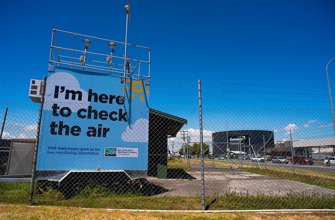There is increasing concern throughout the world about the possible health effects of coarse particulate matter. These are defined as particulate matter less than 10 µm in diameter, although in some countries more emphasis is now being placed on the smaller fraction (termed fine particulate matter), less than 2.5 µm (PM2.5) in diameter.
Particulate size comparisons
In New Zealand the main source of PM10 emissions in most areas during the winter months is solid fuel burning for domestic heating, although industrial contributions may also be significant in a number of locations. Domestic home heating is also responsible for the majority of the PM2.5 emissions in most locations as most of the PM10 emissions from this source are the smaller PM2.5 size fraction. Motor vehicle emissions may also be a major source of PM10 and PM2.5 in Auckland, although further work is being carried out to assess this.
The characteristics, sources and potential health effects of larger or "coarse" particles and smaller or "fine" particles are very different. Coarse particles come from sources such as windblown dust from exposed surfaces like building sites and unsealed roads, from mines and quarries, and some industrial activities. Fine particles are generally emitted from activities such as industrial and residential combustion, and from vehicle exhaust. Fine particles are also formed in the atmosphere from gases such as sulphur dioxide, nitrogen oxides and volatile organic compounds that are emitted from combustion processes and become particles because of chemical transformations in the air.
Coarse particles can deposit in the upper regions of the human respiratory system and may contribute to health problems such as bronchitis and aggravation of asthma.
Fine particles can deposit deeply in the lungs, and are therefore more likely to contribute to a range of health effects, which have been found in a number of recently published epidemiological studies.
These effects include:
- Increased hospital admissions and emergency room visits due to respiratory complaints.
- Aggravated asthma.
- Acute respiratory symptoms including severe chest pain and aggravated coughing.
- Chronic bronchitis.
- Decreased lung function which can be experienced as shortness of breath.
- Premature death.
This makes it important for Council to continue to develop a good understanding of the current levels of airborne particulate matter throughout the region, as part of the Air NERMN programme. Measurements are being mainly directed at urban areas because the major contributors are likely to be motor vehicles and residential heating using solid fuel fires, especially wood burners.



